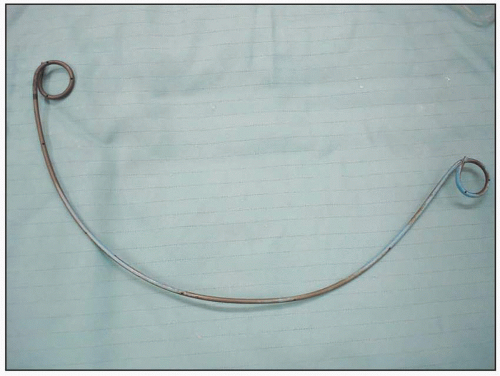Definitions
Urinary tract infection (
UTI) is currently defined as the inflammatory response of the urothelium to bacterial invasion usually associated with bacteriuria and pyuria.
Bacteriuria is the presence of bacteria in the urine. This can be symptomatic or asymptomatic.
Pyuria is the presence of white blood cells (
WBC) in the urine, which indicates inflammation of the urothelium. This could be due to bacterial infection or other pathology such as tumour, stones, foreign body or tuberculosis.
In 1960 Edward Kass proposed defining
UTI based on the finding of at least 10
5 bacteria colonies/ml of urine regardless of symptoms. He found that a single culture of 10
5 cfu/ml or more had a 20% chance of representing contamination. Since then, it has been shown that about 20-40% of women with symptoms of
UTI have bacterial counts of less than 10
5 (
Stamey et al., 1965). In men, counts as low as 10
3 cfu/ml of a pure or predominant organism have been shown to be significant in voided urine (
Lipsky et al., 1987). Where there is evidence of contamination, a carefully collected repeat specimen should be examined.
In children, confirmation of
UTI is dependent on the quality of the collected specimen. Negative cultures or growth of <10
4 cfu/ml from bag urine may be diagnostically useful. However, counts of 10
5 cfu/ml should be confirmed by culture of a more reliable specimen. This could be either a single urethral catheter specimen or, preferably, a suprapubic aspirate (
SPA). Bacteriuria usually exceeds 10
5 cfu/ml in
SPAs from children with acute
UTI (
Ginsburg and McCracken, 1982).
For patients with indwelling catheters, urine cultures may not reflect bladder bacteriuria because sampled organisms may have arisen from biofilms on the inner surface of the catheter.
In conclusion, when making a diagnosis of
UTI, the patient’s clinical condition and symptoms should be taken into account. A count of >10
5 cfu/ml is likely to be associated with
UTI regardless of symptoms. However, lower counts of 10
2 cfu/ml may be potentially significant in symptomatic patients, regardless of sex. A pure isolate of between 10
4-10
5 cfu/ml needs to be evaluated on clinical information or confirmed by repeat culture.
Clinical manifestations
Acute uncomplicated cystitis usually occurs in young women. It is an infection of the bladder that has an abrupt onset and produces severe symptoms that are usually accompanied by pyuria and bacteriuria. Symptoms include frequency, dysuria, urgency, nocturia, haematuria and occasionally incontinence. Uncomplicated cystitis can occur in some men.
Acute urethral syndrome occurs in women with acute lower urinary tract symptoms with either a low bacterial count or without demonstrable bacteriuria or vulvovaginal infection.
Acute pyelonephritis (pyelitis) is an inflammatory process of the kidneys and adjacent structures. Symptoms include loin or abdominal pain and fever. Symptoms of cystitis may also be present. Severity ranges from mild disease to full blown Gram-negative sepsis with a few patients developing complications such as intrarenal and perinephric abscess. Such cases often require aggressive diagnostic and therapeutic measures.
Chronic pyelonephritis (chronic interstitial nephritis, or reflux nephropathy) is the second commonest cause of end-stage renal failure. It is thought to be a result of renal damage caused by
UTI in infants and children with vesicoureteric reflux (
VUR), or in adults with obstructive uropathy. However, it is still unclear whether recurrent infection causes progressive kidney damage.
Perinephric abscess is an uncommon complication of
UTI, affecting patients with one or more anatomical or physiological abnormalities. The abscess may be confined to the perinephric space or may extend into adjacent structures. Pyuria, with or without positive culture, is seen on examination of urine. Patients may present with swinging fever, back or loin pain, and very occasionally with loin fistula. Causative organisms are usually Gram-negative bacilli but can also be staphylococci or
Candida species. Mixed infections have also been reported.
Pyonephrosis results from bacterial infection of an obstructed ureter such as with a ureteric stone. Patients usually present with symptoms of pyelonephritis but will also usually have signs of obstruction on imaging. Diagnosis is made from blood culture or pus drained from the kidney. It is a urological emergency and draining the kidney is the first line of treatment.
Renal abscesses are localized in the renal cortex and may occur as a result of Staphylococcus aureus bacteraemia but they can also happen as a complication of acute pyelonephritis caused by Gram-negative bacilli. Pyuria may be present, but urine culture is usually negative.
Urethritis is common in both male and female patients. It is often associated with
UTI and occasionally with bacterial prostatitis.
Male urethritis is commonly caused by sexually transmitted diseases (
STD) and is associated with urethral discharge. The main organisms responsible are:
Neisseria gonorrhoeae (gonococcal urethritis),
Chlamydia trachomatis and
Ureaplasma urealyticum (non-gonococcal urethritis or
NGU).
Female patients may present with acute urethral syndrome or urethrocystitis caused by enterobacteria, Staphylococcus saprophyticus and less commonly by C. trachomatis and N. gonorrhoeae.
Prostatitis is an inflammation of the prostate gland. Routes of infection of the prostate include ascending urethral infection, reflux of infected urine into the prostatic ducts that empty into the posterior urethra, invasion of rectal bacteria by direct extension or by lymphatic spread or by haematogenous spread.
Acute bacterial prostatitis presents as an acute, febrile illness with marked constitutional and genitourinary symptoms. Chronic bacterial prostatitis is less dramatic and
features relapsing, recurrent
UTIs, caused by the organisms persisting in the prostatic secretions despite antimicrobial therapy. Chronic bacterial prostatitis is less common than non-bacterial prostatitis. Bacterial prostatitis is associated with
UTI. Organisms responsible are similar to those that cause
UTI.











